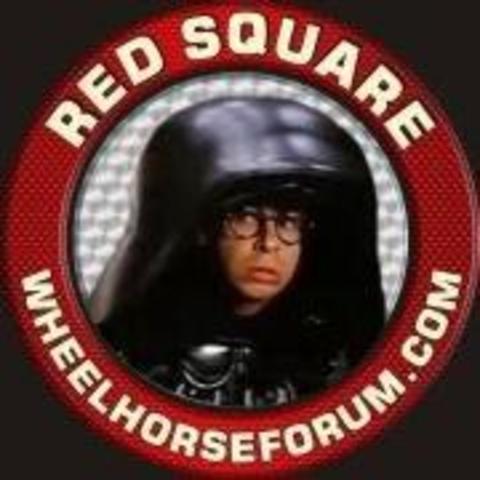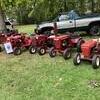Countdown To Christmas!
|
|
Sign in to follow this
Followers
0
Pre-1967 Steering Wheel Restoration
By
MikesRJ, in Restorations, Modifications, & Customizations
-
Similar Content
-
 By CasualObserver
By CasualObserver
Operator manual
Illustrated parts list
6 pages 3.73MB
Illustrated parts list #A-7136
Includes PSB #023 #052 #058 #060 #080
10 pages 938.48KB
Engines used according to Toro
Clinton B1290-1107
Kohler K91-31307A
Kohler K91-31388A
Electric start kit
Electric starter kit model EC-35 for Clinton engine - Listed for 1958 and 1959
Electric starter kit model EK-35 for Kohler engine - Listed for 1958 and 1959
6-12 tire chains model TC-12 - Listed for 1958 and 1959
Seat cushion Foam rubber with imitation leather cover model FC-24 - Listed for 1958 and 1959
Transmission drive belt 1567 - (4L x 29" or 1/2" x 29")
Details & Attachments
2 pages 107.33KB
1958 model RJ-58
1958 serial numbers that have shown up for the RJ-58
Early models used Kohler K90T-27107D equipped with a Schnacke recoil unit with a backup rope starter contained under the recoil assembly and an oil bath air filter.
00005
00251
01099 - No casting date on trans. Leather gearshift boot, large, round rear wheel hubs, "slab" hitch, replacement engine
01188 - Has round rear wheel hubs
01516
01636
01768
01789 - No casting date on trans. Leather gearshift boot, 3-ear triangular rear wheel hubs, "slab" hitch, Clinton engine with Schnacke recoil
01797
01871
02525
03177
03501 - Located in UK
03796 - Kohler K90T-27107D with serial 364044 equipped with a Schnacke recoil unit with a backup rope starter contained under the recoil assembly and an oil bath air filter.
04041
04883
04885
05000
05619
05714
05798
06528 - May be 16528
06749
06771
07633
07649 - Transmission J12-8 October 12, 1958
07725
08440
08612
09284
09337 - Hard to read
10163
11432
11628 - # 3521 spline gear with 10 splines changed to 11 splines in 5003 and 5010 transmissions at serial # 11628 PSB #023
11916
12221 - B3-9 trans casting date - Kohler K91 engine with Schnacke recoil
12291
14473
14713
16097
16528 - May be 06528
166x6
16868 - F4-9 trans casting date - Kohler K91 engine with Fairbanks recoil, solid pan seat without holes
18348
June 2023
18500 and lower
Late 1958 units came with a Kohler K-91T-31307A equipped with a Schnacke recoil unit with a backup rope starter contained under the recoil assembly and an oil bath air filter.
------------------------------------------------------------------------------------------------------------------
Details & Attachments
2 pages 106.94KB
1959 model RJ-59
1959 serial numbers that have shown up for the RJ-59
Early 1959 units came with a Kohler K-91T-31307A equipped with a Schnacke recoil unit with a backup rope starter contained under the recoil assembly and an oil bath air filter.
18501 and up - Possible 1100 units built
20078 - Located in UK
203xx
21033
292xx
21900 - 1960 Suburban 400 began production at serial #21900 somewhere around Aug-Oct 1959.
Late model RJ-59 tractors with a Kohler would have a K-91T-31388A with the Fairbanks recoil starter and paper air filter element. The 31388A was also used on the 1960 Suburban 400.
K91T-31388A Serial 425251 found on RJ-59
-
 By bigbuck
By bigbuck
I'm not positive of the model, but I think I'm close. Please call George at 517-499-5678
-
 By RJcollector
By RJcollector
Ive been thinking about selling my 4 RJ-58s and all the attachments and parts I have. I have 4 tractors-2 have Kohler K91T , 1 has the Clinton and one has no engine. Only 1 is missing the serial number decal. Kohlers run. Clinton needs a carb. I have original exhaust shields AND belt guards for 3 of them. 3 mower decks, 2 plows, cart, 2 spare transmissions, parts breakdowns, original manuals and sale tags, seats, tires. Not sure if I should sell it as 1 big collection or break it up. And also a good starting price? I'll post pics when I get a chance. Thanks
-
 By wh315-8
By wh315-8
The RJ58 was the big hit for spectators this year at my local festivals here in Carroll County OH.
the children loved getting their pictures sitting on it, then they discovered the bicycle horn under the steering wheel. It’s always a joy even in parades. Just love showing off part of my collection every year and hearing all the stories from those that had WH in their lives at one time. Can hardly wait to get to retirement so I can get some of my other models back to their glory in working order and be able to attend other shows/festivals throughout the year. My fellow tractor enthusiasts always know when a spectacular starts asking about WH, they point in my direction. I study up on the history of the different models and always intrigue those that didn’t know much about how WH came to be. This website is one place that has helped me learn so much about the WH history and I thank you for sharing your knowledge that I am able to pass on to keep WH alive and well.
-
 By Vaughan32850
By Vaughan32850
Has anyone got a WT-30 tiller they can send pictures if pleas? It’s the one fitted with a K91 engine for RJ models.
Many thanks
-
